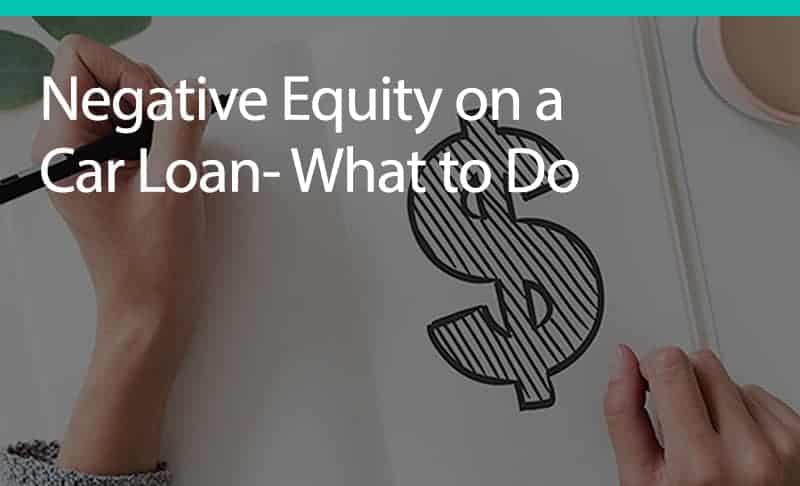
Negative Equity on a Car Loan: What to Do
Negative equity means that you owe more money on your car loan than the vehicle itself is worth. This is also referred to as being “upside down” on a loan and it can have an impact on your ability to sell or trade-in your car for a new one. Keep reading for everything you need to know about negative equity and some tips for getting yourself back on stable financial ground.
How does negative equity work?
Cars are expensive to buy and maintain and most people need to secure a loan in order to pay for them. Cars also depreciate very quickly — especially new ones. Because of this reality, it’s not unusual for car owners to end up with negative equity on their vehicle. As you pay off your loan, the amount you owe will eventually go down enough to balance out with the value of your car.
Negative equity becomes an issue when you want to sell your car. If you owe more than you can sell your car for, you’ll end up having to make up the difference with your lender. For example, if you still owe $15,000 on your car, but that vehicle is only worth $10,000 today, there is a $5,000 gap that needs to be covered to close out your loan.
Why do I have negative equity on my car?
From buying a car you can’t afford to getting stuck with a high interest rate, there are many ways to end up with negative equity on your vehicle.
- You bought a car you couldn’t afford: It’s easy to get caught up in the excitement of shopping for a new car, but buying a vehicle with all the newest gadgets will get old pretty quickly if you can’t afford to pay it off. Most financial experts say that car payments shouldn’t exceed 10 percent of your gross income.
- You didn’t have a down payment: You can also find yourself with negative equity if you didn’t have a down payment (or a large enough down payment) when you bought your car. Since the entire value of your car is financed, you end up in the negative as soon as you drive off the car home thanks to depreciation.
- You had a high interest rate or your loan term was too long: The terms of your contract can also lead to negative equity. It might seem like a good idea to get a longer loan term to take advantage of lower monthly payments; however, you will end up paying more for your car because of the added interest payments. A higher interest rate because of poor credit also means paying more.
- You rolled a previous car loan into your current one: Combining two loans might seem like a good way to ease your financial burden in the short term, but it can quickly lead to a mountain of debt that’s hard to tackle. If you currently have negative equity and are considering rolling two loans into one, take some time to assess your finances and decide if you can afford to pay off a larger loan comfortably.
How to get out of a negative equity car loan
The good news is that it is possible to get out of a negative equity car loan. You can employ one or more of these strategies to pay off your debt quicker and get on the right side of negative equity:
- Sell your vehicle: Even if you have negative equity, selling your car can bring in a large chunk of change that you can put towards your debt.
- Make extra payments: Paying more might seem counterintuitive when you’re stressed about money, but throwing an extra $25 towards your loan each month can get you closer to positive equity. Check with your lender first to make sure you won’t incur any fees if you pay off your loan early.
- Refinance your loan: Refinancing involves working with your lender to get a new loan that better matches your current financial situation. That could mean securing a lower interest rate or extending the term of your loan.
- Shift your debt: Move your car loan into a lower interest line of credit or home equity loan. This doesn’t solve the problem, but it can make payments more manageable in the interim.
- Find some added income: Is getting a side job or selling some of your seldom-used sports equipment an option? Every little bit of added income can go a long way to paying off your car loan quicker.
How to trade in a car with negative equity
Maybe you have another child on the way and need to upgrade to a minivan, or maybe it’s time to move on to a new, more fuel efficient hybrid car. There’s plenty of reasons to trade in your old car — even if it’s not paid off yet.
Dealerships take your vehicle’s entire equity to determine its trade-in value. If you have negative equity, the amount you’ve paid off your loan will count as equity towards a new car. The remainder of the loan can be rolled into the loan for your new car, but remember that this will make for a larger loan.
We’ll give you all the details on three ways you can get cash for used cars and how to prepare your car for the final sale.
How to avoid negative equity on your car
The best way to keep positive equity in your car is to do your research before you buy and take a good look at your budget. Birchwood Credit Solutions takes a holistic approach to vehicle financing so you can get into your dream car sooner and within your ideal budget. Fill out an application today and contact us to learn more.



